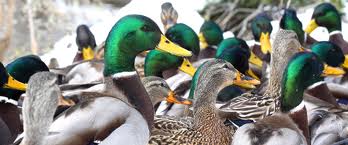 MONTGOMERY-Among the many wonderful things about the
MONTGOMERY-Among the many wonderful things about the  approach of fall is the anticipation of migratory waterfowl arriving in the wetlands and waterways across Alabama. This anticipation brings the eager preparation of duck boats, blinds, decoys, duck calls and shotguns. When preparations are complete, all thoughts turn to opening morning of duck season when one can witness the slow sunrise and the skies peppered with flying waterfowl. As hunters hunker down in their favorite “honey hole,” confidence is high that a few of those ducks will join them. Sometimes the ducks come and sometimes they don’t, but either way, the emotions experienced by every waterfowler on opening morning remain strong and vibrant just knowing the possibility is there.
approach of fall is the anticipation of migratory waterfowl arriving in the wetlands and waterways across Alabama. This anticipation brings the eager preparation of duck boats, blinds, decoys, duck calls and shotguns. When preparations are complete, all thoughts turn to opening morning of duck season when one can witness the slow sunrise and the skies peppered with flying waterfowl. As hunters hunker down in their favorite “honey hole,” confidence is high that a few of those ducks will join them. Sometimes the ducks come and sometimes they don’t, but either way, the emotions experienced by every waterfowler on opening morning remain strong and vibrant just knowing the possibility is there.
 Although all waterfowlers will agree that we don’t see the numbers of mallards in Alabama that we once did, most agree that the healthy populations of gadwall, wood ducks and green-winged teal make mornings in the duck blind more than worthwhile. On the other hand, some long for the days of mallard limits and believe there is a solution to the “problem” through the release of captive-reared mallards into the wild. This involves ordering day-old ducklings from a hatchery and raising them in large ponds enclosed with fencing and covered in netting to protect them from avian predators. These ducklings are fed a high-protein diet to promote fast growth and then released future shooting opportunities once they are capable of flight.
Although all waterfowlers will agree that we don’t see the numbers of mallards in Alabama that we once did, most agree that the healthy populations of gadwall, wood ducks and green-winged teal make mornings in the duck blind more than worthwhile. On the other hand, some long for the days of mallard limits and believe there is a solution to the “problem” through the release of captive-reared mallards into the wild. This involves ordering day-old ducklings from a hatchery and raising them in large ponds enclosed with fencing and covered in netting to protect them from avian predators. These ducklings are fed a high-protein diet to promote fast growth and then released future shooting opportunities once they are capable of flight.
Studies have found that roughly 70 percent of pen-raised mallards die before hunting season begins, primarily due to 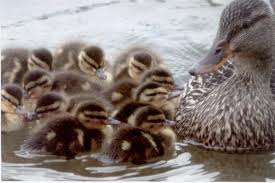 the ducks’ inability to avoid natural predators and nutritional deficiency. However, some of these ducks survive to intermix with wild populations of migratory ducks and eventually migrate to different states and provinces within the flyway. While many view this as a positive, there are a number of concerns being evaluated by the U.S. Fish and Wildlife Service (USFWS) that may affect the legality of captive-reared mallard releases in the future.
the ducks’ inability to avoid natural predators and nutritional deficiency. However, some of these ducks survive to intermix with wild populations of migratory ducks and eventually migrate to different states and provinces within the flyway. While many view this as a positive, there are a number of concerns being evaluated by the U.S. Fish and Wildlife Service (USFWS) that may affect the legality of captive-reared mallard releases in the future.
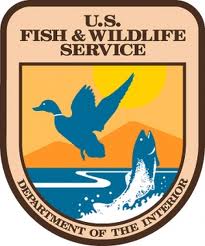 The primary concern shared by USFWS, state wildlife agencies, and the flyway councils is the risk associated with the exposure of wild populations of waterfowl to several diseases and parasites commonly found in birds when they are held in large numbers in close proximity. Wildlife disease outbreaks such as duck virus enteritis, duck plague and avian cholera are most commonly found in populations in large groups (overcrowded) or confined animals and illustrate the serious risk associated with such activities.
The primary concern shared by USFWS, state wildlife agencies, and the flyway councils is the risk associated with the exposure of wild populations of waterfowl to several diseases and parasites commonly found in birds when they are held in large numbers in close proximity. Wildlife disease outbreaks such as duck virus enteritis, duck plague and avian cholera are most commonly found in populations in large groups (overcrowded) or confined animals and illustrate the serious risk associated with such activities.
Another concern is the risk of genetic mixing and hybridization with wild populations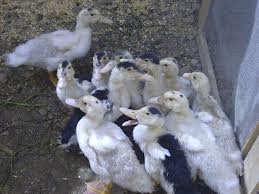 of ducks. While the long-term effects are difficult to measure, pairing and interbreeding of captive-reared mallards with wild mallards, black ducks, and mottled ducks has been documented. Small, isolated non-migratory populations, such as mottled ducks, seem to be the most at risk, although local breeding populations of black ducks and wild mallards in the eastern United States are also at risk for hybridization. Through recent studies, researchers have determined that the genetic differentiation between mallards and black ducks has declined significantly over the past century and this is strongly believed to be the result of hybridization. Considering that the stock of captive-reared mallards has been bred for aggressive and successful reproduction, the idea that a more aggressive breeding mallard is being introduced into the wild population should not be trivialized.
of ducks. While the long-term effects are difficult to measure, pairing and interbreeding of captive-reared mallards with wild mallards, black ducks, and mottled ducks has been documented. Small, isolated non-migratory populations, such as mottled ducks, seem to be the most at risk, although local breeding populations of black ducks and wild mallards in the eastern United States are also at risk for hybridization. Through recent studies, researchers have determined that the genetic differentiation between mallards and black ducks has declined significantly over the past century and this is strongly believed to be the result of hybridization. Considering that the stock of captive-reared mallards has been bred for aggressive and successful reproduction, the idea that a more aggressive breeding mallard is being introduced into the wild population should not be trivialized.
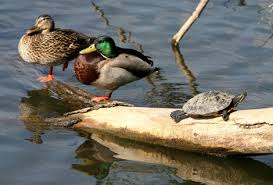 Based upon a 2001-02 review, the USFWS Division of Migratory Bird Management concluded that there is a greater potential for violations of federal waterfowl hunting regulations on shooting preserves where releasing and shooting captive-reared mallards is a routine practice. Concerns involving captive-reared mallards being used as “live decoys” – e.g., the ducks raised on these preserves are less afraid of people, often return to the ponds immediately after flushing, and are less concerned with hunters moving around in the blind, etc. – is a concern of wildlife law enforcement agencies. Also, concerns related to baiting, shooting over the limit, and the take of wild ducks out of season were addressed as potential law enforcement issues linked with release of captive-reared mallards on shooting preserves.
Based upon a 2001-02 review, the USFWS Division of Migratory Bird Management concluded that there is a greater potential for violations of federal waterfowl hunting regulations on shooting preserves where releasing and shooting captive-reared mallards is a routine practice. Concerns involving captive-reared mallards being used as “live decoys” – e.g., the ducks raised on these preserves are less afraid of people, often return to the ponds immediately after flushing, and are less concerned with hunters moving around in the blind, etc. – is a concern of wildlife law enforcement agencies. Also, concerns related to baiting, shooting over the limit, and the take of wild ducks out of season were addressed as potential law enforcement issues linked with release of captive-reared mallards on shooting preserves.
In addition to disease risks, genetic effects and enforcement issues, another aspect of large-scale captive-reared mallard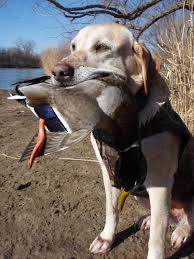 releases is the effect on waterfowl management programs. Programs that are designed to track the movement, survival, and harvest rates of mallard populations can be affected in release areas. When aerial waterfowl inventories are conducted, counting large numbers of captive-reared mallards and including them into the mid-winter waterfowl surveys confounds data that are used to guide management decisions. Since these biases are entered into international waterfowl databases and band recovery data indicate some of these birds are being recovered in Canada, the release of captive-reared mallards has impacts far beyond localized areas.
releases is the effect on waterfowl management programs. Programs that are designed to track the movement, survival, and harvest rates of mallard populations can be affected in release areas. When aerial waterfowl inventories are conducted, counting large numbers of captive-reared mallards and including them into the mid-winter waterfowl surveys confounds data that are used to guide management decisions. Since these biases are entered into international waterfowl databases and band recovery data indicate some of these birds are being recovered in Canada, the release of captive-reared mallards has impacts far beyond localized areas.
 While at first glance the release of captive-reared mallards may appear to increase local populations and provide additional hunting opportunities for a small group of hunters, the question must be addressed as to whether this perceived benefit is worth the risk to the entire wild migrating population of waterfowl. While there is disagreement about the risk versus the reward regarding captive-reared mallard releases, all waterfowlers will agree that the anticipation of opening day is a tradition that should not be risked.
While at first glance the release of captive-reared mallards may appear to increase local populations and provide additional hunting opportunities for a small group of hunters, the question must be addressed as to whether this perceived benefit is worth the risk to the entire wild migrating population of waterfowl. While there is disagreement about the risk versus the reward regarding captive-reared mallard releases, all waterfowlers will agree that the anticipation of opening day is a tradition that should not be risked.
For more information, contact Jud Easterwood, Wildlife Biologist, Alabama Division of Wildlife and Freshwater Fisheries, 21453 Harris Station Road, Tanner, AL 35671; phone 256-353-2634.
MEDIA RELEASE/Jud Easterwood, Wildlife Biologist, Alabama Division of Wildlife and Freshwater Fisheries

